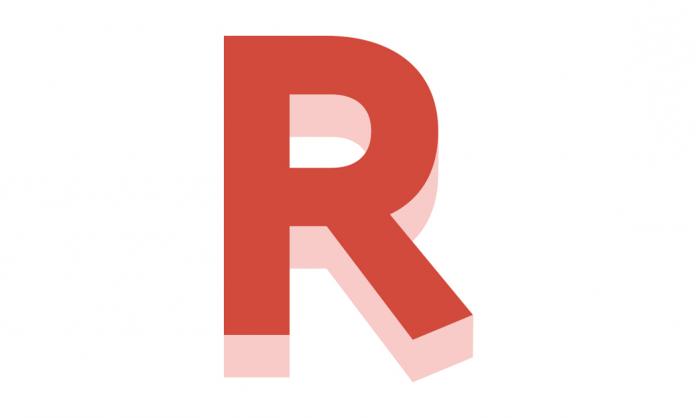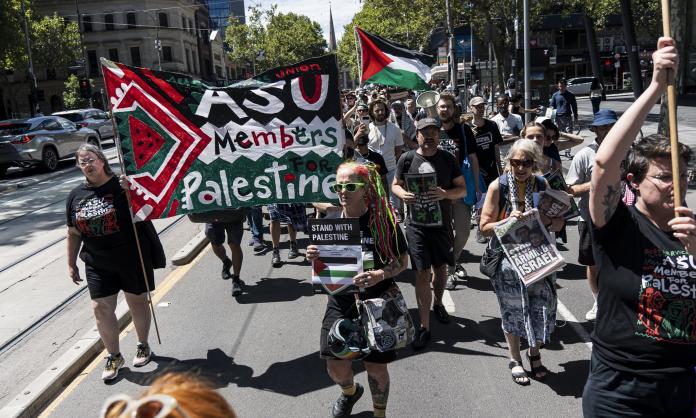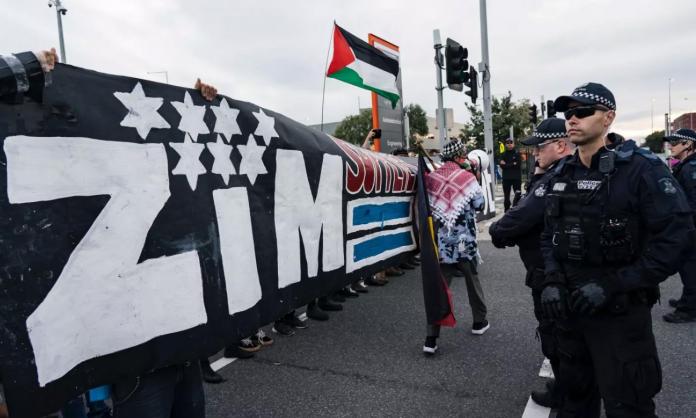After 40 days on strike, plasterboard workers at the Knauf factory in Melbourne voted to return to work on 25 October. The main attack from the company—loosening the wording in the enterprise agreement to allow permanent workers to be replaced with insecure labour hire workers—was withdrawn.
“Defeating this attack is our gift to future generations of Knauf workers, who will enjoy more secure work because of the nearly six weeks we spent out the gate”, Viraj Dissanayake, a lead delegate at the site, told Red Flag.
To end the strike, the company offered an important laundry service to manage safely the chemical additives that workers are in contact with, an income protection scheme, overtime at double pay, a 7.5 percent increase to penalty rates, improved staffing levels and union training. Workers’ base pay will increase 5 percent in the first year of the agreement, then 4 percent for each of the next three years. They will receive back pay for the period from July.
When the billion-dollar company locked them out in mid-September, the workers could have guessed that they were in for a serious battle. But six weeks on strike will test anyone. How did they do it? The support that they received from their union, the CFMEU, was critical. Financial support for the strike camp and for the workers losing pay was strong, with CFMEU members at the Footscray hospital construction site alone raising $13,000.
Messages of support came in from across the workforce, and countless CFMEU members and organisers spent hours at the camp with the striking workers. It also mattered that the union gave the workers the freedom to fight hard—the leaders of many other unions would have tried to avoid the strike in the first place or to wrap it up earlier, even if that meant pressing the workers to make concessions.
Solidarity also came from much wider circles, with tens of thousands of dollars collected from other unions and union members, messages of support from workers ranging from teachers to packaging workers, a regular presence from members of the Victorian Socialists campaign, and even a $500 donation and message of support from the University of Melbourne Student Union, initiated by members of Socialist Alternative.
The Knauf workers also set a standard for giving solidarity, taking time to visit the picket lines of AWU members at the Qenos petrochemical plant in the western suburbs, and recording messages of support for striking Apple workers.
But before solidarity and support weigh into a dispute, the workers themselves need to plant a flag that others can rally around. The Knauf workforce had the brains and the guts to back themselves at every turn. This confidence doesn’t develop overnight—there were members and delegates with years of organising experience who provided a critical local leadership.
This factor shaped the 100 percent “no” vote to a dodgy early offer from the company, as well as the 100 percent “yes” ballot by union members for industrial action. Each of these moments, and dozens of others, were tests that the Knauf workers navigated successfully. Knowing that each shift on strike was costing the company millions of dollars also gave them a sense of confidence that they could hurt the company.
Of course, there was more to fight for (a pay rises above the current inflation rate was a big part of the dispute), and the workers talked a lot about the pros and cons of continuing the strike. But in the end, they voted to take the gains on the table and walked back in with their heads held high.
“It was actually a good experience, as in a learning curve, knowing how much power an individual has when a workforce sticks together and becomes united”, one Knauf worker said.
The dispute has also raised the Knauf workers’ expectations of how they should be treated, and reinforced the need to continue to organise and act collectively. “The place of work should be safe, clean and free of bullying, harassment, intimidation and threats from management and other staff. Unfortunately this is not the case, so our struggle as workers continues with our current management. SHAME KNAUF SHAME!!”, another strike participant noted.
A younger CFMEU member reflected on the stress of the strike and the unity that got them through:
“During the strike, there was a cloud of anxiousness. And every day not knowing where the finish line was was scary. Thoughts of ‘How much longer can my family last like this?’ were in my head most days. The unity of all the union members from Knauf made me appreciate that my family was struggling alongside every bloke’s family on that picket line, and it made me say, ‘Your problems are no less or greater than anybody else here’. I think everybody went through that, and there was a massive bond created between everybody.”
Viraj summed up the key lesson: “We showed one of the world’s biggest companies that they are not all powerful. We showed workers all around Melbourne and all around the country that workers can call the shots”.










